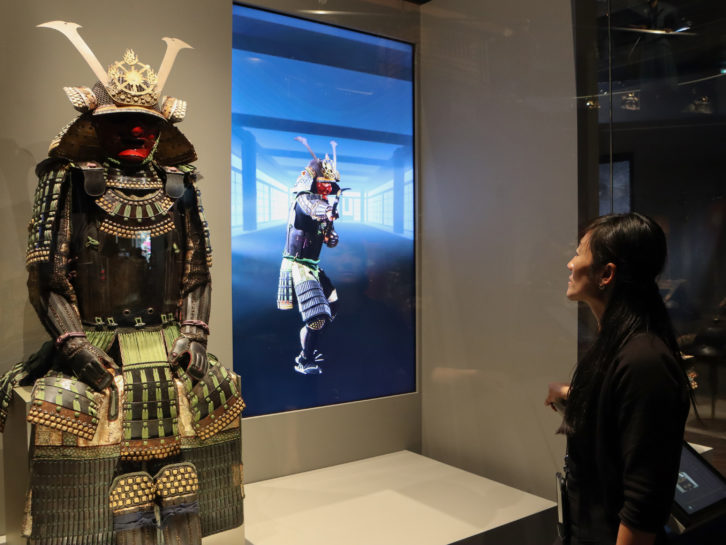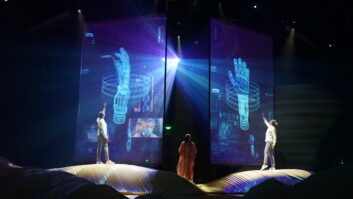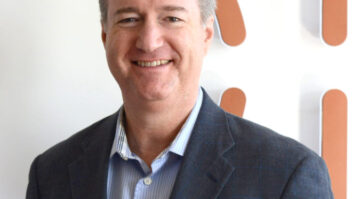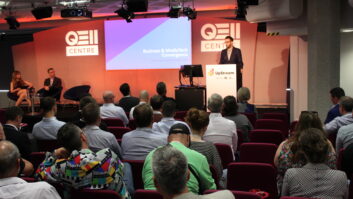Museums have always faced the challenge of attracting more visitors without resorting to gimmicks that could undermine the cultural or educational value of what is being shown. Traditional display cases and static exhibits are still important as ways of showing artefacts and documents but when it comes to the explanatory information, new technologies are taking over the role of little printed cards.
A survey by Statista Research found that, as of May 2021, many institutions were planning to implement some form of new technology, devices or digital formats. The highest proportion – 78% – showed interest in what is very generally described as ‘audio and video elements’. More specific technologies being considered included: visual information displays, in other words, touch screens (59%); projections (52%); smart objects such as QR codes, RFID (radio frequency identification) and NFC (near-field communication), which came in with 47%; interactive surfaces and responsive environments (42%); augmented reality (AR, 34%) and virtual reality (VR, 33%); and 3D elements with moving images (28%).
The second highest category was online exhibitions, with 67% of respondents looking at an area that became vital for the survival of museums during the pandemic. Like other businesses, many museums had to shut as lockdowns were imposed. According to a national snapshot report by Wilkening Consulting for the American Alliance of Museums, of 850 members surveyed, nearly 30% remained closed due to Covid in 2020. It also found that approximately one third of museum directors were concerned there was a “significant risk” their museums would have to close for good, with 17% not confident of surviving the crisis.
DIRE STRAIGHTS
This dire situation was experienced by museums around the world, although the majority did take the opportunity to digitise their collections and offer virtual tours online. “The pandemic pushed the museum sector towards digitalisation” confirms Andreas Köster, project manager of interactive technology developer Garamantis. “The projects we saw were mostly in web technologies, with museums starting to 3D scan their collections and make them available online. Or they offered simple online tours.”
 Jacek Rzepka, co-founder of immersive experience designer Unique Interactive, observes that museums began to use technology in different ways both during the pandemic and in its immediate aftermath. “In the first lockdown, many museums focused on improving the virtual/distant exhibitions explored through their websites or other portals,” he says. “When we could all visit museums for the first time in a while, we noticed a growing interest in touchless technologies, using kinetic gesture recognition. Now we also see increasing interest in applications that are simply using devices owned by the visitor, such as mobile phones. This is a driving force for developing more AR and mixed reality applications that can be downloaded by visitors to their own mobiles to act as in-depth information guides, audio and visual guides and games.”
Jacek Rzepka, co-founder of immersive experience designer Unique Interactive, observes that museums began to use technology in different ways both during the pandemic and in its immediate aftermath. “In the first lockdown, many museums focused on improving the virtual/distant exhibitions explored through their websites or other portals,” he says. “When we could all visit museums for the first time in a while, we noticed a growing interest in touchless technologies, using kinetic gesture recognition. Now we also see increasing interest in applications that are simply using devices owned by the visitor, such as mobile phones. This is a driving force for developing more AR and mixed reality applications that can be downloaded by visitors to their own mobiles to act as in-depth information guides, audio and visual guides and games.”
IMMERSIVE TOOLS
VR and AR in particular have been regarded as potentially important tools in creating new museum experiences while at the same time fulfilling the remit to educate and inform. Hilary McVicker, vice president of sales and marketing at virtual environment specialist The Elumenati, comments that museums digitising their collections so that people could see items and exhibits online has led to such techniques being installed in the actual buildings. “Even when museum assets could be viewed at home on a screen or a headset, the deeper engagement of immersion and interactivity creates a reason to visit museums in person,” she says.
McVicker adds that “traditional ‘hand-on’ exhibits with physical interactivity” are now evolving to incorporate emerging technologies: “Interactivity engages visitors by creating a sense of agency – the visitor owns their experience. That makes it meaningful and memorable. Web 3.0 technologies are being incorporated as well for everything from virtual galleries to NFT exhibits. AR and mixed realities offer significant potential for visitor engagement and all sorts of interactive tech can be found in museum exhibits, because interactivity is key to creating a sense of presence and making it feel real. However the metaverse evolves, we can be sure that museums will develop digital strategies to complement physical exhibits.”
In nearly all scenarios The Elumenati’s GeoDome immersive spaces are interactive, with touchscreens and tablets being at the more straightforward end of the interface spectrum. At the other extreme the company’s custom installations are driven by more innovative user interfaces that utilise emerging technologies from the games world. The touchscreen in particular has become widely used as a source of information in museums, which has been driven by this technology having become such a part of life in general. “Because of the ubiquity of touchscreens in our day-to-day lives, we see touchscreen experiences most commonly interweaved with static exhibits,” says Saurabh Gupta, vice president of Out Of Home Product at interface technology developer Ultraleap. “There is interplay between static exhibits followed by or placed next to a touchscreen-driven experience. By adding digital exhibits people are able to consumer content at their own pace, through touchscreens or other interactive media.”
CHANGING TOUCH
Like the animals, birds and early humans that feature in so many museum exhibitions, the touchscreen is set to evolve and change, adapting to different needs and situations. The most immediate development is into touchless technology, which Gupta says is a relatively straightforward transition: “We can enable a touchscreen-based exhibit today to be converted to a gesture-based or gesture driven interface very easily. Or we provide technology that enables content creators and the people who build immersive, engaging content to create stories in a more natural, human interaction way. But everything is context-driven, depending on what the exhibit is. If you are trying to communicate a big storyline to a lot of people, breaking them into digital kiosks may not make sense. There isn’t an across the board move to convert everything to a touchscreen kiosk but there is a place for it, depending on the context, the footfall, budgets and many other things.”
 The shift to touchless operation is already underway. Gupta describes this as “3D interactivity”, which allows people to interact with digital content using hand movements, whether in relation to a 2D screen, like a touchscreen, or a VR exhibit. Ultraleap is currently working on touchless interaction technologies that will be used in conjunction with digital kiosks designed and built by UK-based manufacturer Acante Solutions. These systems incorporate a small camera above a 32-inch screen with software that recognises where a person’s hand is in relation to what is being displayed. A dot on the screen follows the hand movement, allowing someone to select items by jabbing their finger in the air, although it can also be operated in the usual way by touching the screen.
The shift to touchless operation is already underway. Gupta describes this as “3D interactivity”, which allows people to interact with digital content using hand movements, whether in relation to a 2D screen, like a touchscreen, or a VR exhibit. Ultraleap is currently working on touchless interaction technologies that will be used in conjunction with digital kiosks designed and built by UK-based manufacturer Acante Solutions. These systems incorporate a small camera above a 32-inch screen with software that recognises where a person’s hand is in relation to what is being displayed. A dot on the screen follows the hand movement, allowing someone to select items by jabbing their finger in the air, although it can also be operated in the usual way by touching the screen.
Sales director Jason Southern comments that although this might appear at first slightly gimmicky, this method of interactivity has advantages in a post-Covid world in terms of hygiene and reducing how much people have to touch things, as well as offering financial benefits. “It has a number of savings impacts,” he says. “You’re not having to buy cleaning products all the time and the less people touch the screens, the longer they’re likely to last.”
The Acante kiosks with Ultraleap touchless technology will initially be used in a small number of Burger King outlets but Southern says they also have potential in the museum sector. Acante builds kiosks for three purposes: Inform (information), which is very applicable to museums; Ident (identification), incorporating cameras and passport readers for hotels, airports and other travel hubs; and Serve (self-service). This last system, Southern observes, also has uses in museums: “You would have ticketing machines at the entrance so people can buy the relevant tickets for an exhibition. Then, walking around the museum, there may be kiosks as the information screens, with interactivity to explore different areas, and then there’d be another self-service solution in a restaurant and also the shop, selling gifts relevant to the museum.”
FUTURE TRENDS
By their nature museums look to the past but the way people continue to use them depends a great deal on the future. Jacek Rzepka at Unique Interactive highlights the trend for 360-degree panoramas or interactive cave installations, together with projection mapping or large-scale LED screens run through kinetic gesture interfaces. “Such a system is able to transfer the visitor to a completely other reality, for example a digital or virtual interactive representation of a historical scene that can react to a visitor’s movements,” he says.
Saurabh Gupta at Ultraleap concludes that the museum sector will follow how younger people now want to obtain information: “The general trend we’ve seen in adjacent areas – and it’s true for museums as well – is that you look at Millenials and Generation Zers, they’re digital natives who are pretty much glued to their phones. In malls and entertainment venues people expect digital experiences and that should trickle down into the museum environment as well. Digitalisation is a trend that a lot of museums are adopting and have to adopt. The other features they need to look at is immersion and interactivity, which are concepts that will significantly play a part in the museum world.”
Given that, at one time, many children would sooner eat green vegetables than visit a museum, it’s a massive turnaround that their modern counterparts are now influencing how technology might shape these places of knowledge and learning.







